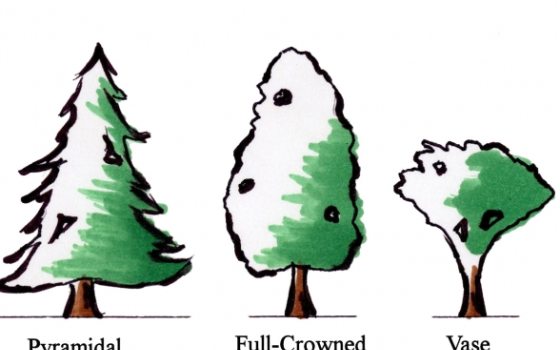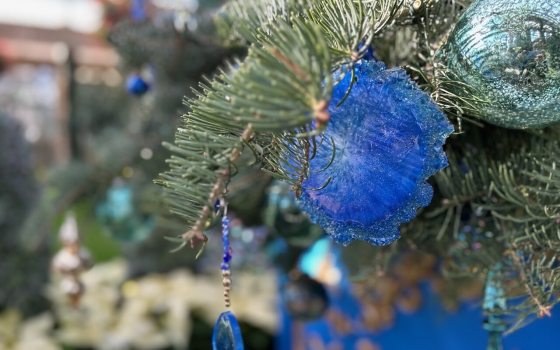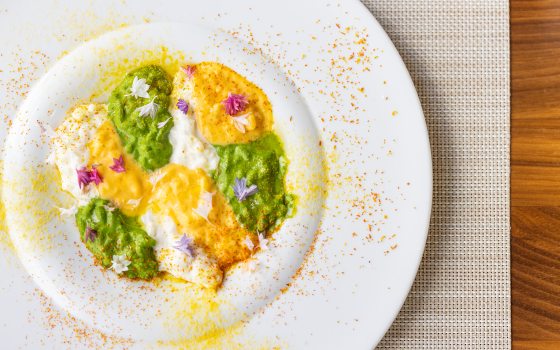Trees have an immeasurable number of benefits such as being planted for use as shade or wildlife habitat in parks and recreation areas, or as sustainable forests to provide lumber. However when it comes to your home garden, it can get a little more personal.
A Tree’s Purpose
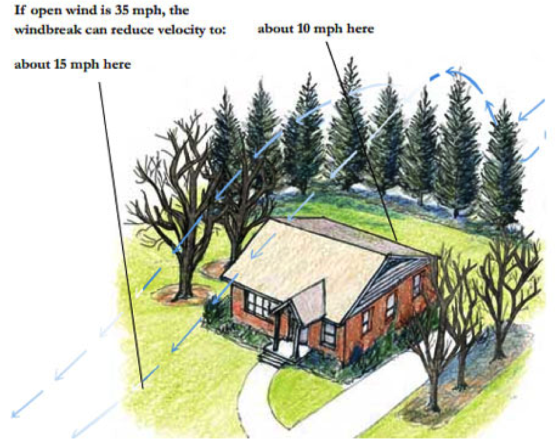
Tree planting as a windbreak.
In newer developments, there are a lot of hard, impermeable surfaces due to wider streets, large paved driveways and congested housing in smaller lots. During heavy or prolonged rainfall, water tends to run off into your yard or street. Planting trees near your driveway and street can help reduce water runoff which in turn helps reduce flooding in surrounding waterways.
Finally, one of the most common reasons trees are planted is for their aesthetics. Whether you’re a serious gardener, a weekend warrior or your thumbs really aren’t that green, you probably still have a tree that either flowers or produces fruit in your yard. Trees can be extremely pleasing to the eye when they provide a display of bright flowers or a crop of ripe apples!
Tree Size and Shape

Now that you’ve decided on the purpose of your planting, you’ll have to find the tree that best fits your needs. Because trees come in all kinds of shapes and sizes, this may be difficult. If you’re planting close to a driveway, road or structure, plant a tree that won’t grow too large. Many trees are being removed in neighbourhoods because they were planted too close to the homes, causing mold and damage to roofing and/or siding. Also, their roots could start to buckle the driveway, sidewalk or road. If you are interested in planting a tree near or on the street, consult your local city website as some post recommended trees that are suitable for such a location. For example, visit Philadelphia's Recommended Street Trees for Philadelphia, Pennsylvania’s recommended list.

Something else to take into account is the size of your property and how crowded it is. Do you have acreage where you can plant whatever and wherever, or do you have a small postage stamp lot with limited space? Trees need space to grow and will compete to get the most light. If you plant trees too close together, some of your trees may die back or become stunted from limited light. Space out your plantings so you have open areas for your specimens to flourish.
Another consideration is the shape of the trees you want to plant. Trees can be of any shape but they mainly fall into several categories; pyramidal, full-crowned, fountain, weeping, columnar, spreading, vase-shaped, and multi-stemmed. This will play a very important role in selecting your tree for the right spot. You would not want to put a weeping tree over your patio or driveway, but instead maybe a columnar or vase-shaped would be best. Make sure you keep these points in mind when selecting your tree and planting spot.
Hardiness Zone
Where you live is going to determine what trees are available and which will grow best in your region. These zones are called hardiness zones. The zones can be found on a hardiness zone map published by the U.S. Department of Agriculture. Zones are categorized by the low temperature extremes for a given area. See the map below and see what zone you live in! Once you know your hardiness zone, you can go to a nursery and make sure that the tree you want will do well in your yard. Trees will normally have tags saying what zones the tree will survive in. If not, ask your nurseryman/woman, who will have good knowledge of this. Because hardiness is based off of extremely low temperatures, there’s still a chance your tree may not survive, depending on how hot or dry it gets. Another possibility for failure would be if you plant your tree in a container where the roots are not as insulated as they would be in the ground. Be sure to do your homework before investing in your yard’s future.
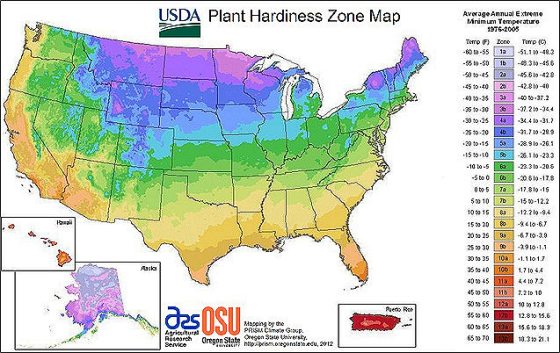
Current USDA plant hardiness zone map courtesy of USDA.
Plant Health Care
Knowing what kind of disease or insect damage a tree may incur before you purchase and plant it will be beneficial to your investment. Most trees will get some type of disease or insect infestation in its lifetime. Knowing what that may be and how severe it will be is important. For the most part, these attacks can be cured, mitigated or slowed down but it will cost money. For example, Canada Hemlock (Tsuga canadensis) is very vulnerable to Hemlock Woolly Adelgid. This pest can be kept under control, but will require a chemical application each year. To avoid the costs of spraying annually, there are other evergreen trees that could be used in place of Canada Hemlock which aren’t as threatened. Researching future potential pests of targeted trees will also help to choose the best one for your landscape. For example, the Emerald Ash Borer is becoming a major threat to all Ash trees and is currently present in part of the Northeast and rapidly spreading. If you’re in the path of this pest, it may be best to avoid planting Ash trees to save yourself a headache later on.
Tree Inspection
Now that you’ve chosen your tree species, it is time to choose the best specimen. It is important to start with a healthy tree so it can handle the stress of being transplanted. The first thing to look for is healthy twig growth. If the tree is putting on good growth, the foliage should look healthy and be evenly distributed throughout the entire crown of the tree. Make sure the leaves look healthy and aren’t wilting or dying off. Next, you want to look for good crown structure, preferably one central trunk with horizontal growing limbs, not multiple upright branches.
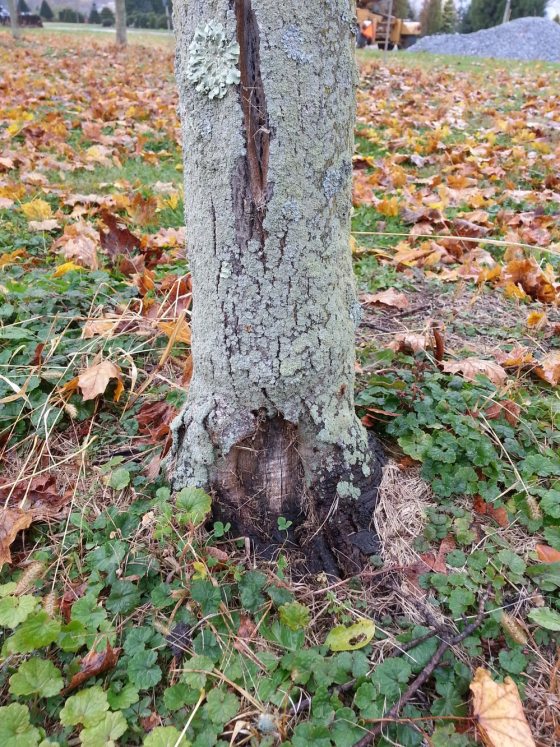
Example of mechanical damage to the trunk of a tree.
Planting
Planting is the final step in improving your property and the environment! Before your tree has arrived, you should have the location already chosen. If the tree is small enough to carry, hold by the container or root ball and not the trunk or crown, because this can cause damage to the root system. If it’s not manageable by hand, use a hand truck, ball cart or even a piece of machinery to move the tree, work smarter, not harder! Make sure the trunk is protected to prevent mechanical damage.
The planting hole should be two and a half to three times the diameter of the root ball and almost as deep. Before placing the tree in the planting hole, expose the root flare with your hands or carefully use a small plastic hand rake. The base of the root flare should be at or slightly above grade. You can use a shovel or rake handle to make rough measurements. Use caution when placing the tree in the hole. You can roll the root ball in or use a cart, but try to avoid handling the tree by the trunk or damaging the root ball. Once in the hole, cut the container or burlap and twine off of the root ball. If the tree is balled and burlaped, it may have a wire cage around it and this should be removed as well. If you cannot get it all, at least remove all the sides; leaving the bottom will suffice.
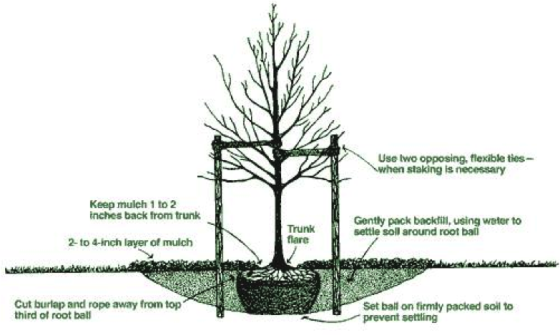
Tree planting diagram.
This is a good time to rough up/break up the outside of the root ball; sometimes the soil is hard and compacted. Breaking it up will allow the roots to start growing outside of the ball. When back-filling the planting hole with soil, be sure to use the same soil you removed, amending the soil with compost or better soil may do more harm than good. The roots will prefer the better soil and may not grow outside of the planting hole. Tamp some soil around the base of the root ball and double check the straightness of the tree. Once straight, continue to fill in the rest of the hole. Only tamp the soil down with your hands or feet, there is no need to use a tamper. Remember not to cover the root flare with soil. The root flare should be level or slightly higher than the edge of the hole. Adding three to four inches of mulch will help keep the root ball cool and hold moisture in. It can also add beneficial nutrients as it breaks down.
In some instances the tree should be staked and tied with some type of wide webbing material, to avoid girdling the stem. It should be tied at least one half to two-thirds up the trunk. Staking should be kept on the tree for a full growing season and then removed. It is important to stake your tree if it’s going into soft soil, a windy site, or has a loose root ball.
Regular watering practices are important (ask your local nurseryman/woman what is best for your climate). There are several products on the market today that allow you to fill up a designated container once and let the water drain on its own. This prevents you from having to drag a hose or watering can out every day and allows water to slowly drip on top of the root ball, ensuring that mulch and dirt don’t wash away. Finally, leave the rest up to nature!
